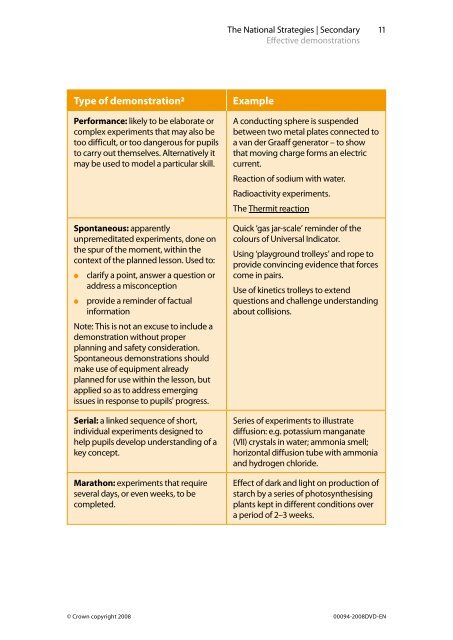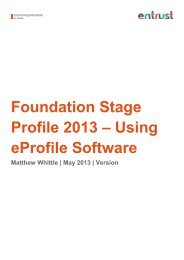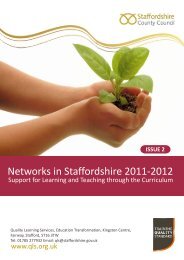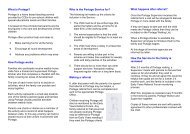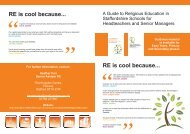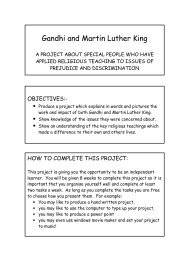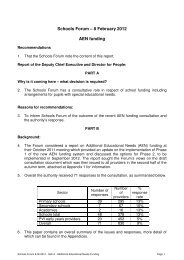Effective demonstrations booklet (401 KB) - Staffordshire Learning Net
Effective demonstrations booklet (401 KB) - Staffordshire Learning Net
Effective demonstrations booklet (401 KB) - Staffordshire Learning Net
Create successful ePaper yourself
Turn your PDF publications into a flip-book with our unique Google optimized e-Paper software.
Type of demonstration2 Example<br />
Performance: likely to be elaborate or<br />
complex experiments that may also be<br />
too difficult, or too dangerous for pupils<br />
to carry out themselves. Alternatively it<br />
may be used to model a particular skill.<br />
Spontaneous: apparently<br />
unpremeditated experiments, done on<br />
the spur of the moment, within the<br />
context of the planned lesson. Used to:<br />
● clarify a point, answer a question or<br />
address a misconception<br />
● provide a reminder of factual<br />
information<br />
Note: This is not an excuse to include a<br />
demonstration without proper<br />
planning and safety consideration.<br />
Spontaneous <strong>demonstrations</strong> should<br />
make use of equipment already<br />
planned for use within the lesson, but<br />
applied so as to address emerging<br />
issues in response to pupils' progress.<br />
Serial: a linked sequence of short,<br />
individual experiments designed to<br />
help pupils develop understanding of a<br />
key concept.<br />
Marathon: experiments that require<br />
several days, or even weeks, to be<br />
completed.<br />
© Crown copyright 2008<br />
The National Strategies | Secondary<br />
<strong>Effective</strong> <strong>demonstrations</strong><br />
A conducting sphere is suspended<br />
between two metal plates connected to<br />
a van der Graaff generator – to show<br />
that moving charge forms an electric<br />
current.<br />
Reaction of sodium with water.<br />
Radioactivity experiments.<br />
The Thermit reaction<br />
Quick ‘gas jar-scale’ reminder of the<br />
colours of Universal Indicator.<br />
Using ‘playground trolleys’ and rope to<br />
provide convincing evidence that forces<br />
come in pairs.<br />
Use of kinetics trolleys to extend<br />
questions and challenge understanding<br />
about collisions.<br />
Series of experiments to illustrate<br />
diffusion: e.g. potassium manganate<br />
(VII) crystals in water; ammonia smell;<br />
horizontal diffusion tube with ammonia<br />
and hydrogen chloride.<br />
Effect of dark and light on production of<br />
starch by a series of photosynthesising<br />
plants kept in different conditions over<br />
a period of 2–3 weeks.<br />
11<br />
00094-2008DVD-EN


